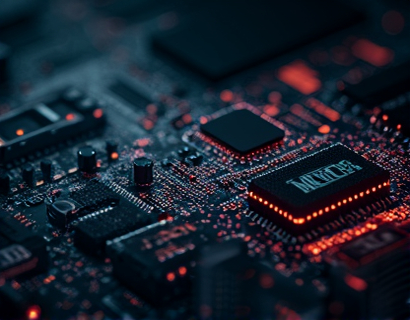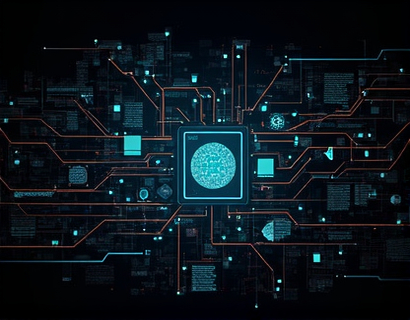Next-Gen Smart Contract AMMs: Revolutionizing DeFi Trading with Advanced Automation
In the rapidly evolving landscape of decentralized finance, Automated Market Makers (AMMs) have emerged as pivotal components, offering a novel approach to trading and liquidity provision. Traditional AMMs have laid the groundwork for decentralized exchanges, but the next generation of smart contract AMMs is taking this technology to unprecedented heights. This article delves into the advancements in smart contract AMMs, focusing on how they are elevating DeFi trading through advanced automation, enhanced liquidity management, and innovative trading strategies.
Understanding Smart Contract AMMs
Smart contract AMMs operate on blockchain networks, utilizing sophisticated algorithms to determine asset prices and execute trades without the need for order books. Unlike traditional AMMs that rely on a fixed formula, next-gen smart contract AMMs leverage machine learning and predictive analytics to adapt to market conditions in real-time. This dynamic approach ensures that liquidity providers and traders benefit from more accurate pricing and reduced slippage, even during high-volatility periods.
The core mechanism of a smart contract AMM involves liquidity pools, where users deposit pairs of cryptocurrencies to create a pool from which others can trade. The ratio of the assets in the pool is maintained by a set of rules encoded in smart contracts. These rules ensure that the market remains balanced and that liquidity is always available. Next-gen AMMs enhance this mechanism by incorporating advanced protocols that optimize liquidity distribution and minimize impermanent loss for providers.
Advanced Automation in AMMs
One of the most significant advancements in next-gen smart contract AMMs is the integration of advanced automation. This automation extends beyond basic order execution to include sophisticated trading strategies, risk management, and automated rebalancing. By leveraging smart contracts, these systems can execute complex trades with precision and speed, reducing the need for human intervention and minimizing the risk of errors.
For instance, automated market making (AMM) strategies can be programmed to dynamically adjust the liquidity provision based on market conditions. During periods of high volatility, the system can automatically reduce liquidity to minimize losses, and during stable periods, it can increase liquidity to capture more trading opportunities. This adaptive approach ensures that liquidity pools remain efficient and attractive to traders, regardless of market conditions.
Enhanced Liquidity Management
Liquidity management is a critical aspect of DeFi trading, and next-gen smart contract AMMs offer robust solutions to optimize liquidity pools. One key feature is the implementation of yield optimization algorithms. These algorithms continuously monitor the performance of liquidity pools and adjust the allocation of assets to maximize returns for liquidity providers. By leveraging real-time market data and predictive models, these algorithms ensure that providers are compensated fairly while the AMM maintains high liquidity levels.
Another advanced feature is the introduction of dynamic fee structures. Traditional AMMs often use fixed fee rates, which can be suboptimal during different market conditions. Next-gen AMMs employ dynamic fee adjustments based on factors such as liquidity depth, trading volume, and market volatility. This approach not only incentivizes more liquidity provision during times of need but also ensures that fees are fair and reflective of the current market dynamics.
Innovative Trading Strategies
The automation capabilities of next-gen smart contract AMMs open up a plethora of innovative trading strategies that were previously unfeasible. One such strategy is algorithmic arbitrage, where smart contracts automatically identify and exploit price discrepancies across multiple decentralized exchanges. By executing trades across different AMMs in real-time, these algorithms can lock in profits and minimize losses, providing a significant edge to traders.
Another advanced strategy is the use of synthetic assets and cross-chain trading. Next-gen AMMs can facilitate the creation and trading of synthetic assets that represent the value of assets from different blockchain networks. This cross-chain functionality expands the trading universe and allows users to access a wider range of assets without the need for complex bridging mechanisms. Smart contracts manage the collateralization and settlement of these synthetic assets, ensuring seamless and secure trading experiences.
Improved User Experience and Security
Security and user experience are paramount in the DeFi space, and next-gen smart contract AMMs are designed with these principles in mind. The use of advanced cryptographic techniques and formal verification methods ensures that smart contracts are free from vulnerabilities and bugs. This level of security is crucial for protecting liquidity providers and traders from potential attacks and fraudulent activities.
From a user perspective, the integration of user-friendly interfaces and intuitive dashboards makes it easier for crypto enthusiasts to manage their liquidity and execute trades. Real-time market data, customizable alerts, and detailed analytics provide users with the insights they need to make informed decisions. Additionally, the automation of routine tasks reduces the cognitive load on users, allowing them to focus on higher-level strategy and decision-making.
Challenges and Future Directions
Despite the numerous advantages, next-gen smart contract AMMs face several challenges that need to be addressed. One major challenge is the regulatory landscape, which is still evolving and often uncertain. Compliance with varying regulations across different jurisdictions can be complex, but it is essential for the long-term sustainability of DeFi platforms. Developers and legal experts must collaborate to create frameworks that balance innovation with regulatory compliance.
Another challenge is the scalability of smart contracts. As the number of users and transactions grows, ensuring that the AMM can handle high volumes without performance degradation is crucial. Solutions such as layer 2 protocols and optimized smart contract design are being explored to address these scalability issues. Additionally, interoperability between different blockchain networks will play a vital role in the future of DeFi, enabling seamless cross-chain trading and liquidity provision.
Conclusion
The next generation of smart contract AMMs is transforming the DeFi trading landscape with advanced automation, enhanced liquidity management, and innovative trading strategies. These advancements not only improve the efficiency and security of decentralized trading but also open up new possibilities for crypto traders and liquidity providers. As the technology continues to evolve, it is poised to play an increasingly significant role in the future of finance, offering a more inclusive, transparent, and efficient trading ecosystem.











































